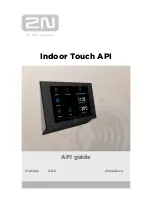
EN-Rev IM/GN-RM-EU/1.21P Copyright © June, 2021. CSI Solar Co., Ltd.
www.csisolar.com
OPTIMUM ORIENTATION AND TILT
To maximize the annual yield, please calculate the
optimum orientation and tilt for PV modules in that
specific installation site. The highest yields are achieved
when sunlight shines perpendicularly onto the PV
modules.
AVOID SHADING
Even minor partial shading (e.g. from dirt deposits)
reduces yields. A module can be considered to be
unshaded if its entire surface is free from shading all
year round. Sunlight should be able to reach at least the
module even on the shortest day of the year.
Constant shading conditions can affect module service
lifetime, due to accelerated ageing of the encapsulation
material and thermal stress on the bypass diodes.
RELIABLE VENTILATION
Sufficient clearance (at least 102 mm (4.02 in)) between
the module frame and the mounting surface is required
to allow cooling air to circulate around the back of the
module. This also allows condensation or moisture to
dissipate.
According to UL 1703, any other specific clearance
required for maintaining a system fire rating should
prevail. Detailed clearance requirements pertaining to
system fire ratings must be provided by your racking
supplier.
5.1 MODULE WIRING
CORRECT WIRING SCHEME
Cable management scheme should be reviewed and
approved by the EPC contractor; in particular required
cable lengths should be cross-checked considering the
specificities of the tracker structure like bearing house
gaps. If longer cable or additional jumper cable is
requested, please contact Canadian Solar’s sales
representative in advance.
Ensure that the wiring is correct before starting up the
system. If the measured open circuit voltage (Voc) and
short-circuit current (Isc) differ from the specifications,
this indicates that there is a wiring fault.
When modules have been pre-installed but the system
has not been connected to the grid yet, each module
string should be kept under open-circuit conditions and
proper actions should be taken to avoid dust and
moisture penetration inside the connectors.
Do not connect different connectors (brand and model)
together.
The maximum distance between two adjacent module
frames should be within 50 mm (1.96in) for the side
with mounting clamps, and within 25 mm (0.98in) for
the side without mounting clamps, in order to meet the
system cable scheme.
CORRECT CONNECTION OF PLUG CONNECTORS
Make sure that all connections are safe and properly
mated. The PV connector should not be subject to stress
from the exterior. Connectors should only be used to
connect the circuit. They should never be used to turn
the circuit on and off.
Connectors are not waterproof when unmated. When
installing modules, connector should be connected to
each other as soon as possible or appropriate measures
(like using connector endcaps) should be taken to avoid
moisture and dust penetrating into the connector.
Do not clean or precondition the connectors using
lubricants or any unauthorized chemical substances.
USE OF SUITABLE MATERIALS
Only use dedicated solar cable and suitable connectors
(wiring should be sheathed in a sunlight-resistant
conduit or, if exposed, should itself be sunlight-
resistant) that meet local fire, building and electrical
regulations. Please ensure that all wiring is in perfect
electrical and mechanical condition.
Installers may only use single-conductor cable listed
and labeled as USE-2 or PV wire which is 90°C wet rated
in North America, and single conductor cable, 2.5-16
mm² (5-14 AWG), 90°C wet rated in other areas (i.e. TUV
2PfG1169 or EN50618 approved), with proper
insulation which is able to withstand the maximum
possible system open-circuit voltage.
Only copper conductor material should be used. Select
All manuals and user guides at all-guides.com








































